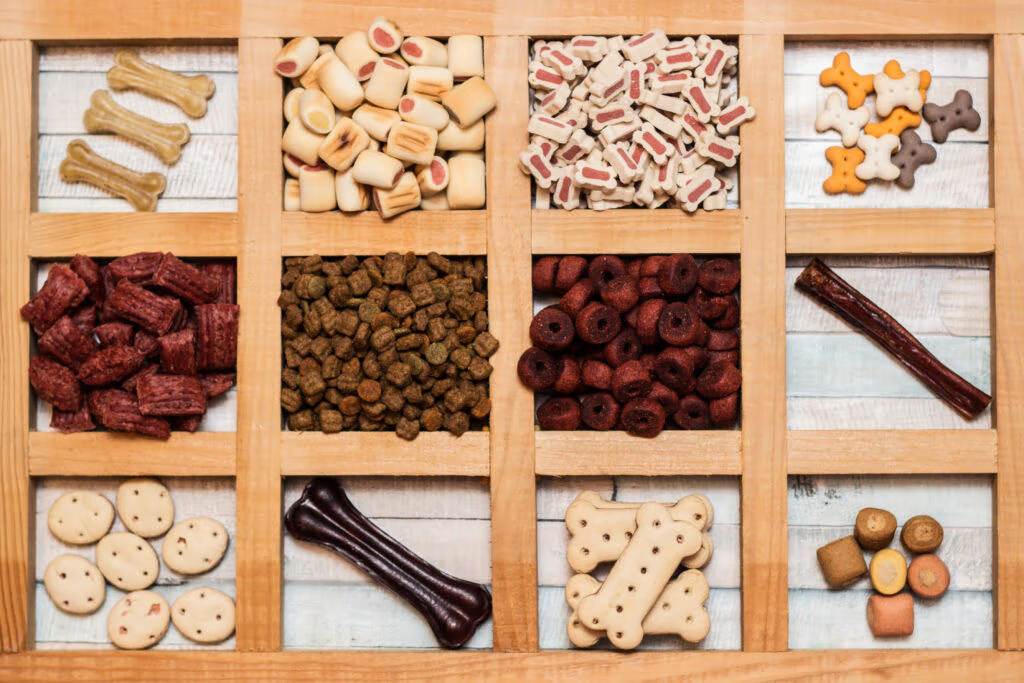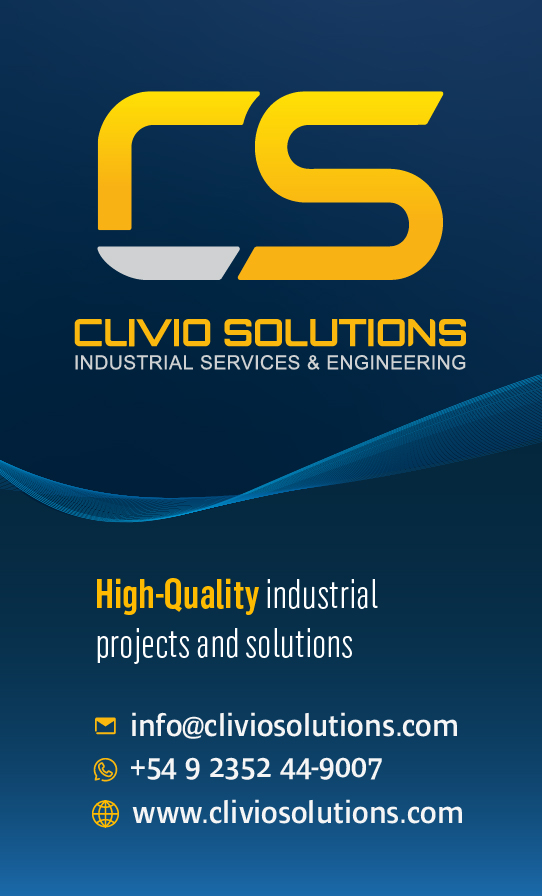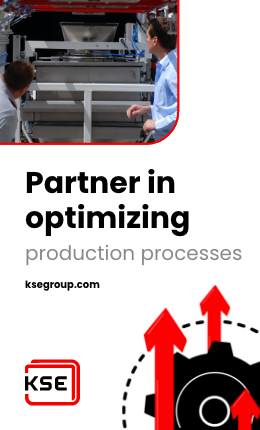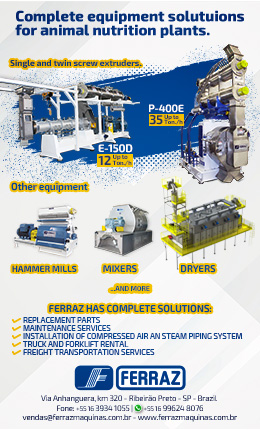From an engineering point of view, extrusion is a continuous molding and firing process that proceeds by the action of friction and shear forces on a superheated fluid, at high pressure, contained between a sleeve and a movable thread that expels it in a supported and controlled by an orifice of a determined size, generating at the exit of the equipment an expansion and molding process that is completed by a cutting system that provides the final desired size to the cooked mixture.
Extrusion is a clean process, it uses very low amounts of water, it is very energy efficient and of very high productivity, it has an extra advantage that the mechanical development of the machinery is robust and durable. Conforming all this an accessible, well-known, durable and very efficient technology to produce large volumes of balanced feeds. There are extensive specialized articles on types of extrusion and how to assemble them in a plant in the best way, I refer them to those articles since it is not our purpose to treat the process of selection and installation of equipment but how to use it in the most appropriate way once we have it ready at the plant.
From an operational point of view, extrusion must simultaneously comply with these attributes of the product and the production process
- Working flow in ton / h of dry matter
- Product safety
- Product dige1)stibility
- Appearance: shape and size
- Hardness and Palatability
Work flow
The work flow of an extruder is the great concern of plant and production managers. While it is true that the maximum flow rate of a given extruder is determined by its design, it is also true that to reach the maximum design flow it is necessary to control certain process parameters, the ones that have the most impact are:
Die exit area: it is the number of holes in the die that determines the available exit area, if this area is very low the internal pressure rises and can produce refluxes that destabilize the extrusion, in extreme cases there are reverse flows that make the flour comes out through the extruder inlet and not through the die. It is recommended for pets to work in the range of 200mm2 / ton to 400mm2 / ton. The lowest values for products with high protein content, the highest heats for products with high starch content.
Wear level of the extruder threads and their sleeves: to guarantee friction and shear it is necessary that the extruder does not present wear on its parts in contact with the product. In addition to reducing energy transfer, wear severely reduces the carrying capacity of the thread, generating backflow and instability. It is recommended that the clearance between the thread and the sleeve does not exceed the range of 3mm to 6mm depending on the type of extruder and its configuration. A more practical approach indicates that the extruder tip should be replaced every 3 to 4 months if the machine is used at maximum flow for about 20 hours a day.
Product safety
The extrusion process handles extreme pressure and temperature conditions, so the product that comes out of the extruder is usually considered sterile. In order to adequately monitor the pressure and temperature conditions inside the extruder barrel, very robust and expensive probes are needed, which in any case have a large number of failures. Therefore, it is recommended to monitor the temperature of the conditioner. There is scientific evidence that above 71 ° C in the presence of a minimum of 18% humidity, pathogenic bacteria are completely eliminated in the conditioner. This temperature is much simpler to measure.
A key point in this parameter is to eliminate cross contamination, both by dry flour that has not yet passed through the conditioner and by flour residues that are usually projected from the conditioner. For this problem, it is recommended to work at a steam pressure not exceeding 1.5 BAR. On the other hand, all possible leaks of powders in the system that are easily sucked by the pneumatic transport system at the exit of the extruder must be sealed, which has the appropriate conditions to develop microbiological contamination and re-contaminate the product.
Product digestibility
Although the digestibility of the product is largely influenced by the digestibility of the protein sources used in the formulation, it is true that the digestibility of carbohydrates is regulated almost exclusively by the extrusion process. Native (raw) starch is not usable by the digestive system of dogs and cats, but gelatinized starch is, a cooking process that is exclusively handled by the extruder. An indirect measure of the digestibility of the product is the degree of gelatinization of the starch at the exit of the extrusion system, which should not be less than 85%.
Another parameter that impacts on digestibility, due to a question of accessibility, is the degree of expansion of the product, which is also controlled in the extruder, if the product is very compact, it is difficult to chew and digest, reducing not only digestibility. chemical but also biological. To guarantee an adequate degree of expansion, it is advisable to work on the exit area, conditioning temperature and humidity level in the extruder / conditioner and a quality measure, which is the density of the product.
Die exit area, not to exceed 400 mm2 / ton in economical products, reduce as protein and fat content increases to increase expansion.
Conditioning temperature, it is recommended to work at a minimum of 93 ° C to guarantee the rapid gelatinization of the starch.
% humidity in the conditioner: the total level of humidity in the conditioner must be at least 24% to allow an adequate expansion of the product.
Density: all the above parameters can be controlled in a simple way with a single measurement in the extruder that is the density of the product at the exit of the equipment, this parameter is suggested not to exceed 400 g / L at this point in the process to guarantee adequate digestibility of the product.
Appearance: shape, size and color
Although they are parameters that are defined during the food development process, they are operationally controlled in the extrusion system. The shape is fundamentally related to the wear of the extrusion dies, if they are made of a high hardness material (55 to 60 Rockwell C) they tend to last approximately 5000 ton of production before they wear out, softer materials wear out much more quickly.
The size is also influenced by the wear of the die, but fundamentally it is controlled by the cutting speed of the extrusion system. The higher the cutting speed, the smaller the product size. An additional parameter that can influence the size of the product is the speed of rotation of the thread, in extruders with a variable frequency drive that allows handling different speeds, it is verified that increasing the speed of the thread increases the expansion and therefore the size.
Hardness and Palatability
The hardness of the product is closely related to its texture, and this property has a direct and very important impact on palatability.
The texture is the internal structure of the croquettes, their spongy shape product of the expansion.
The arrangement and size of the expansion bubbles determine the type of hardness (texture) of the food, which can be measured with a texturometer, or empirically by pressing the croquettes. It is well understood that hard products are less palatable, mainly for dogs. In the case of cats, they prefer crunchy products, but not hard, all these parameters can be conveniently measured with a texturometer. A microscopic analysis of the interior of the kibbles is also recommended to verify the size and spatial arrangement of the expansion cells (bubbles).
It is not easy to define a group of parameters to suggest for these measurements, and the limits must be constructed for each particular case. If it can be said that the densest products tend to be harder and have a very closed texture that is not suitable for chewing and the expression of odors and flavors that reduces the palatability of the product.
Another impact of the closed texture on palatability is that very dense croquettes with a very compact cell structure have problems absorbing surface liquids, which is why they have a negative impact on the process of applying fats and flavorings, reducing the palatant effect of these two. ingredients.
One of the parameters that has the greatest impact on the texture of the product is the configuration of the extrusion thread, since this configuration governs the amount of mechanical energy that is transferred to the product during cooking. Mechanical high-energy settings are best suited for low-starch, high-fat products, and vice versa. It is complex to be able to make cheap and premium products with the same thread configuration, even more so when fresh meat is included in the premium products.
As can be seen from this short list of parameters, extrusion has a huge impact on quality, sensory characteristics, and industrial performance. Beyond the extrusion technology available, properly calibrating both the mechanical and operational parts of the extruder gives us the ability to significantly modify the characteristics of the product and the general result of the operation.
Keeping the parts free of wear, calibrating the temperature sensors and flow meters, regulating the humidity of the product, controlling the thread configuration properly, have proven to be the parameters that most impact on achieving adequate quality and stable and efficient operation.
Source: All Pet Food
You could be interested: New research brief: Dental stick extrusion utilizing spray dried plasma (SDP)















































